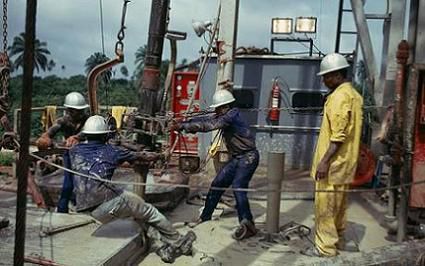The 10 most dangerous jobs in the world
)
When most people think about risky professions, they imagine someone climbing a shaky scaffold or navigating stormy seas. But some of the deadliest jobs are far more common than you might expect. Across the world, thousands of workers die every year simply trying to make a living.
From the hazards of nature to heavy machinery and unpredictable people, these professions carry some of the highest risks on the planet. Based on data from the International Labour Organization (ILO), the U.S. Bureau of Labor Statistics (BLS), and various safety bodies, here are ten of the most dangerous jobs in the world, and the alarming statistics behind them.
Most Dangerous Jobs in the World
10. Armed Forces and Law Enforcement
)
Global deaths: Tens of thousands annually
From armed conflict to street crime, those in uniform face immense daily risk. Soldiers and police officers are often the first line of defence in dangerous situations. In 2023, over 2,500 police officers were killed globally, and military deaths remain widespread in conflict zones. Despite the risks, many are driven by duty, honour and national service.
9. Agricultural Workers
)
Estimated global deaths: Up to 170,000 annually (ILO)
Farming may appear peaceful, but the statistics say otherwise. Workers suffer tractor accidents, equipment mishaps, pesticide poisoning and even animal attacks. Rural isolation adds to the danger, as injuries often go untreated for too long. In some regions, child labour is also common, further increasing the risks.
ALSO REAd: 5 least paying jobs in Africa in 2025
8. Refuse Collectors and Sanitation Workers
)
Fatality rate: 35.8 per 100,000 workers
Waste management is far more dangerous than it looks. Sanitation workers face heavy lifting, exposure to hazardous materials, toxic waste and busy traffic. In many countries, they work without gloves or masks, putting their health and safety on the line every day. Yet their work is essential to public health and cleanliness.
7. Oil and Gas Rig Workers

Injury rate: 2.2 per 100 workers (US, 2022)
Oil and gas rigs are some of the most hazardous work environments on Earth. High-pressure systems, flammable materials, and harsh offshore conditions make for a deadly combination. Transport to rigs is often by helicopter, adding to the danger. While safety measures have improved, incidents like the Deepwater Horizon disaster show how quickly things can turn catastrophic.
ALSO READ: 6 most hazardous everyday jobs in the world!
6. Aircraft Pilots and Flight Engineers
)
Fatality rate: 48.6 per 100,000 workers
Though commercial airline pilots enjoy strong safety systems, pilots of smaller cargo, bush or emergency aircraft face considerable danger. Poor visibility, outdated planes, remote runways and unpredictable weather often spell disaster. Pilots in places like Alaska, South America or parts of Africa routinely risk their lives to transport goods and people.
5. Construction Workers
Estimated global fatalities: Over 60,000 annually (ILO)
Construction remains the backbone of modern infrastructure, but it comes with major hazards. Falling from heights, collapsing scaffolding, power tool accidents and electrical shocks are common risks. In some parts of the world, especially where labour regulations are weak, construction workers face long hours and unsafe conditions without protective gear.
4. Miners
)
Estimated global deaths: Over 15,000 annually (ILO)
Mining is among the oldest and most perilous jobs in the world. Dangers include cave-ins, gas explosions, dust-related diseases and equipment failures. In 2023, more than 240 miners died in China alone. In developing countries like Ghana, illegal or poorly regulated mines increase the danger exponentially. Despite this, high demand for resources keeps mines operational worldwide.
3. Roofers
)
Fatality rate: 59.0 per 100,000 workers
Working at great heights, often on slippery or unstable surfaces, roofers face serious threats. Falls account for the majority of deaths in this sector. In the UK, the Health and Safety Executive (HSE) reported that falls from height were responsible for 24 percent of worker fatalities in 2023. The job also involves intense heat and exposure to the elements.
2. Deep-Sea Fishermen
Fatality rate: 75.2 per 100,000 workers
The sea is unpredictable, unforgiving and often deadly. Deep-sea fishing is physically exhausting and riddled with hazards, including stormy weather, slippery decks, sharp equipment and long hours. The ILO estimates that over 24,000 fishermen die at sea each year. Many do the job because it pays better than land-based alternatives in coastal communities.
ALSO READ: Meet Strive Masiyiwa: Zimbabwe's richest man defying limits with Africa’s first AI factory
1. Logging Workers
Fatality rate: 82.2 per 100,000 workers (BLS, 2023)
Topping the list are loggers, who work in dense forests, often far from help. Risks include falling trees, chainsaw injuries, rough terrain and extreme isolation. Despite technological advances, it remains the deadliest job in the world. High timber demand keeps the industry thriving, especially in resource-rich areas of Africa, Asia and South America.
ALSO READ: 10 jobs that didn’t exist 10 years ago
Final Thoughts: Recognising Risk, Rewarding Courage
Reducing workplace fatalities is possible, but it requires a concerted global effort. Governments, employers and international organisations must prioritise:
Stronger enforcement of safety regulations
Adequate training and education on workplace hazards
Mandatory use of personal protective equipment
Proper medical response systems and insurance
Penalties for employers who neglect safety protocols
Countries with stricter enforcement and worker protections tend to report lower fatality rates. However, in many developing economies, unsafe working conditions persist due to cost-cutting and lack of political will.
While the rest of the world benefits from the work these individuals do, their lives are too often placed at unnecessary risk. From construction sites to the open seas, these workers deserve not only our respect but greater protections.
)
)
)
)
)
)
)